There’s no doubt that wearable electronics are a hot ticket item, right up there with, and perhaps surpassing mobile devices such as smartphones. Physical fitness trackers, health monitors, virtual reality devices, and others have captured the attention of both consumers and designers. And like any new technology, there are those out there who will stretch that technology to its limits and beyond. That just may be the case with Microsoft and MIT researchers latest concoction.
The fruit of labors by Microsoft Research and MIT Media Lab, DuoSkin allegedly takes a slight cue from fashion trends in Taiwan. A street fashion and cosmetics trend, individuals in Taiwan change their appearance to suit their moods or a fashion trend.
DuoSkin takes that concept up a notch. Users can apply metallic patterns on their skin, which are essentially temporary tattoos that function as controls for their personal electronics. Capable of withstanding regular human movement, the material, or paint, is gold metal leaf. Notable, patterns painted on the wearer need to be in the form of standard user interfaces as seen in the gallery below below.
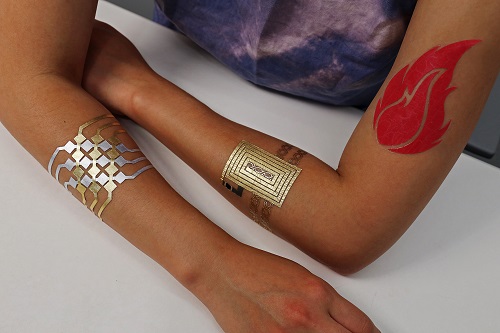
DuoSkin allows users to create three types of user interfaces: input on skin through capacitive touch sensing, output on skin through thermochromic resistive heating circuitry, and wireless communication through NFC.
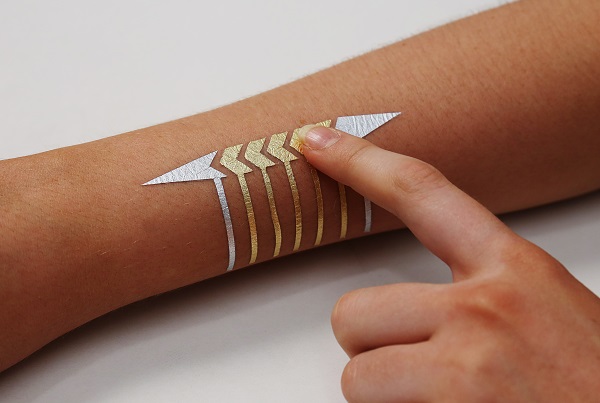
DuoSkin capacitive touch slider made from gold and silver leaf.
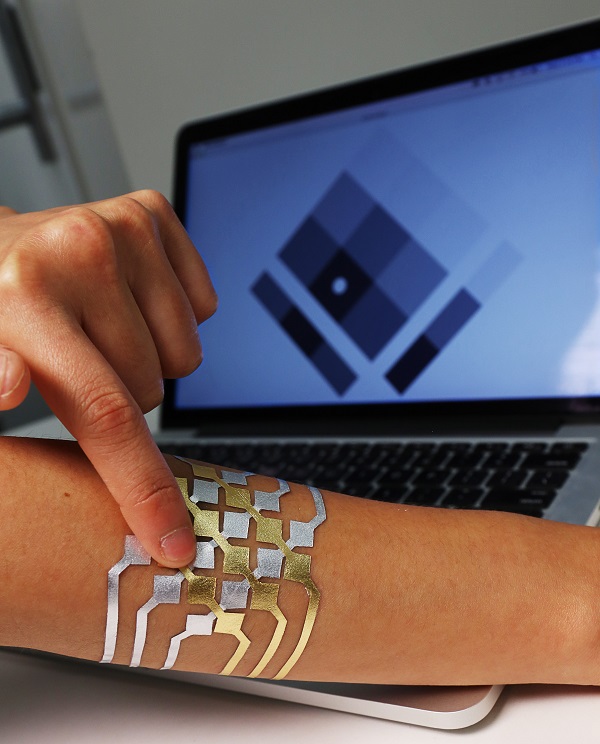
Control devices from DuoSkin 2D trackpad.
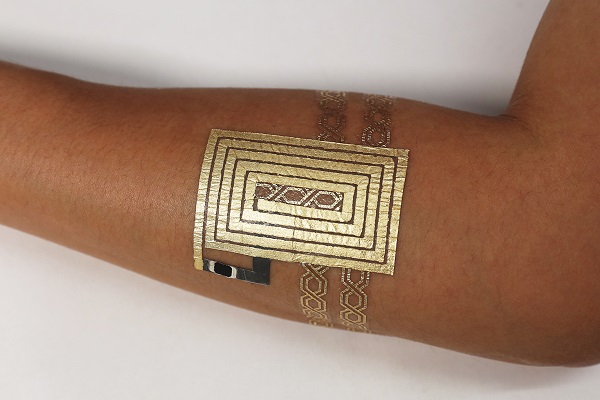
DuoSkin NFC tag communicates and shares data with other devices.
Applications though are still limited with certain hurdles to overcome. Currently, DuoSkin is viable for use as electronic jewelry and for creating buttons and sliders for limited mobile device control. However, these temporary tattoos are affected by various individual behaviors. For example, perspiration affects the operational stability, and in some cases the appearance of the paint-on interfaces.
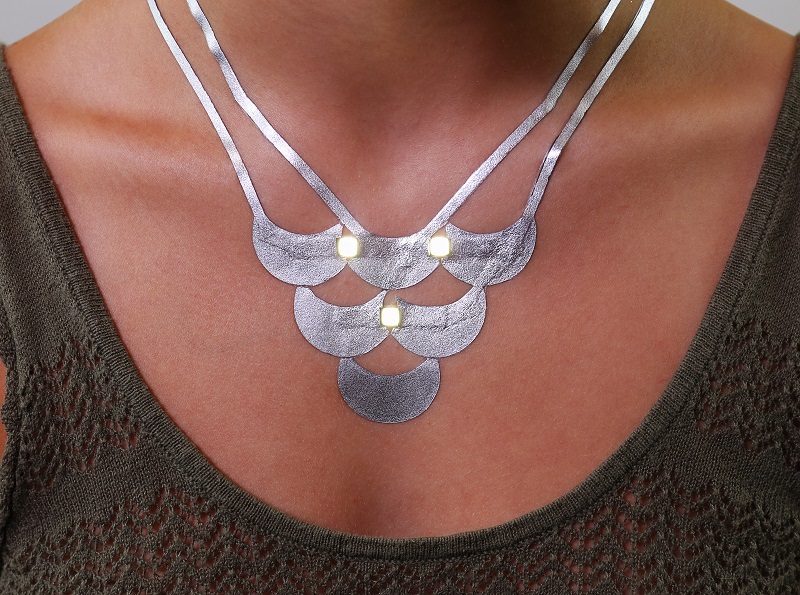
DuoSkin enhances the aesthetics of existing metallic jewelry-like tattoos by embedding LEDs in silver leaf traces.
Of course, there are numerous interfacing issues, i.e., what standards to follow. And there could be some FDA concerns after one person might exhibit an allergy and the event consumes untold levels of media coverage. However, if this technology proves to be profitable, expect it to advance and proliferate.
If you think about, if perfected, DuoSkin could replace a plethora of devices. Imagine actually becoming your very own universal remote! You could control every electronic device in your home, office, and car simply by tapping and/or rubbing tattoos on your arm or other parts of your body. And can you imagine, once these tattoos go mainstream, the sheer fun and hijinks to be had at security checkpoints in airports and elsewhere?
There is a technical paper from MIT Media Lab available describing DuoSkin in detail. To read the formal tech paper, CLICK HERE. Let the tattooing begin! ~MD